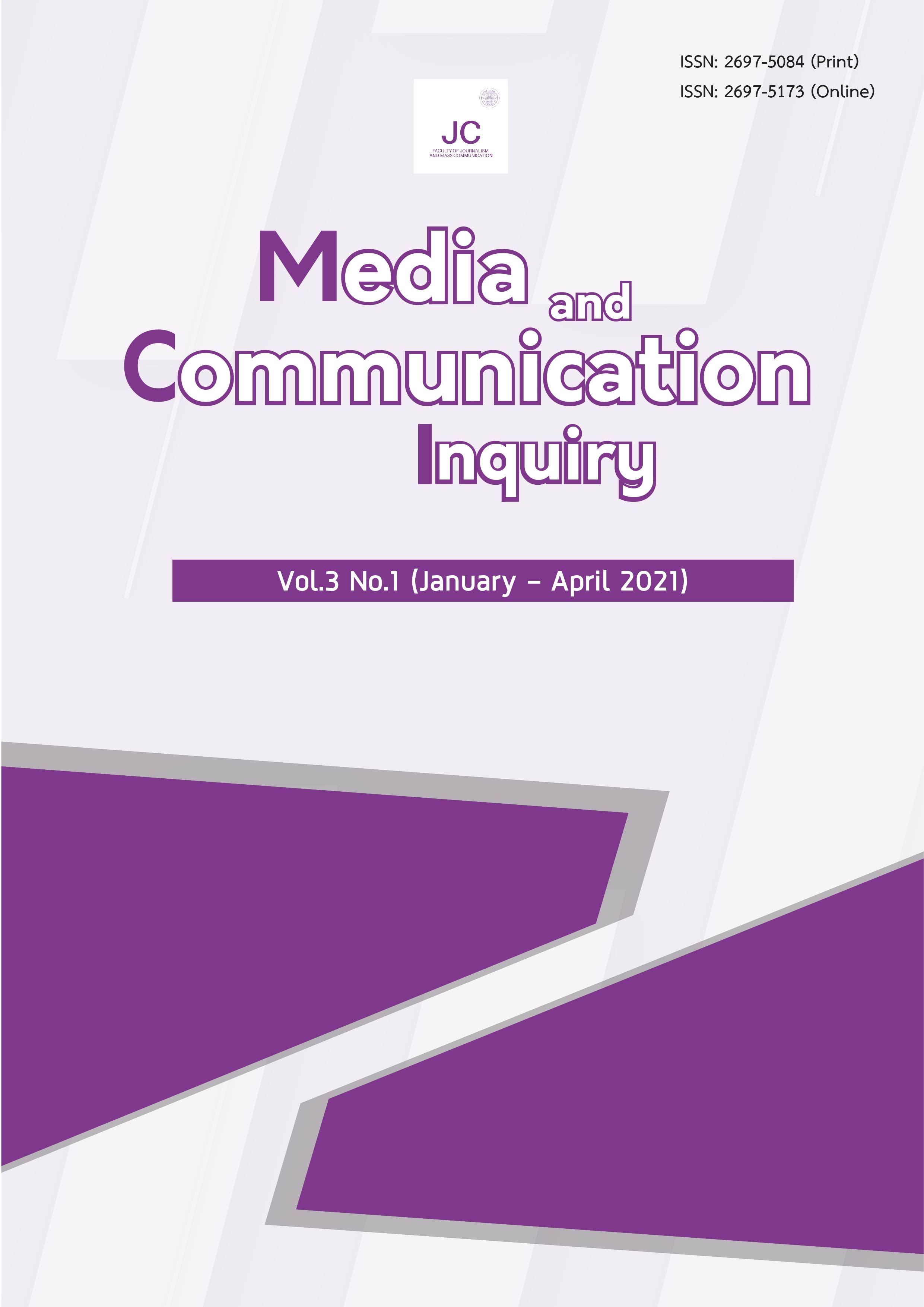Customer Journey and Perceived online shopping risks among millennial consumvers in Bangkok
Main Article Content
Abstract
This research studied the customer journey and perceived risks of online shopping among millennial consumers, 25-40 years old, in Bangkok. Qualitative research was done with data collected from samples residing in Bangkok who shopped online weekly continuously for at least three months. Samples were divided into two groups: five aged between 25 and 30 and five aged between 31 and 40. Data was analyzed by reduction, display, conclusions, and verification. Results were that technological change brought six online shopping steps (awareness, appeal, requests/information search, consideration, action, loyalty /advocacy) and five perceived risk aspects of the online shopping process: functional, logistics, financial, time, and physical. Samples sought methods to reduce worrisome risks and tried to retain personal emotional equilibrium by using communication as a key instrument, with information exposure and interpersonal communication to reduce online shopping risks. In addition, organizational communication or good and trustworthy brands may also reduce perceived online shopping risks.
Article Details

This work is licensed under a Creative Commons Attribution-NonCommercial-NoDerivatives 4.0 International License.
ลิขสิทธิ์บทความ
References
นิศา ชูโต. (2548). การวิจัยเชิงคุณภาพ.พิมพ์ครั้งที่ 3. กรุงเทพฯ : บริษัท พริ้นต์โพร จำกัด.
ผู้จัดการออนไลน์. (6 พฤศจิกายน. 2563). กลุ่ม “Millennials” ฐานผู้บริโภคสำคัญ ผลักดันการเติบโตทางเศรษฐกิจ. สืบค้นจาก https://mgronline.com/smes/detail/963 0000114917
วรวีร์ เธียรธนเกียรติ. (2560). การรับรู้ประโยชน์ของการช้อปปิ้งออนไลน์ การรับรู้ความเสี่ยง ความ ไว้วางใจ และการตัดสินใจซื้อสินค้าอิเล็กทรอนิกส์ผ่านเว็บไซต์พาณิชย์อิเล็กทรอนิกส์. วารสารการสื่อสารและการจัดการนิด้า 3 (1), 64-78.
ศิริลักษณ์ โรจนกิจอำนวย (2561). การรับรู้ความเสี่ยงและความไว้วางใจที่ส่งผลต่อการซื้อผ่านพาณิชย์อิเล็กทรอนิกส์ข้ามพรมแดน. จุฬาลงกรณ์ธุรกิจปริทัศน์ 40 (157), 79 - 99.
สลิลาทิพย์ ทิพยไกรศร. (2561). เส้นทางของผู้บริโภคในยุคดิจิทัล โจทย์ใหม่ทางการตลาด. วารสารปัญญาภิวัฒน์, 10(2), 294-302.
สมิทธิ์ บุญชุติมา และ เกริดา โคตรชารี. (2559). การสื่อสารความเสี่ยง. กรุงเทพฯ: 21 เซ็นจูรี่.
สำนักงานพัฒนาธุรกรรมทางอิเล็กทรอนิกส์. (2563, 02 พฤศจิกายน). สถิติแจ้งเรื่องปี 63 ทำ1212 OCC ของ ETDA ยกระดับการคุ้มครองผู้บริโภคเข้ม. สืบค้นจาก https://www.etda.or.th /th/newsevents/pr/1212-OCC-Statistic-2020.aspx
อรวรรณ ปิลันธน์โอวาท. (2552). การสื่อสารเพื่อโน้มน้าวใจ. กรุงเทพฯ: สำนักพิมพ์แห่งจุฬาลงกรณ์มหาวิทยาลัย.
Adgima Thanagornvit. (9 กันยายน 2563). ‘ช้อปปี้’ เผยอินไซต์ ‘นักช้อปชาวไทย’ ถูกใจสิ่งนี้. สืบค้นจาก https://shopee.co.th/blog/shopee-reveal-inside/
Experian. (16 พฤษภาคม 2561). เอ็กซ์พีเรียนเผยคนไทยกว่า 73% ช็อปสินค้าออนไลน์ ความสะดวกสบายในการจับจ่าย ที่มาพร้อมกับภัยทุจริตออนไลน์ที่สูงขึ้น. สืบค้นจาก https://www.experian.co.th/th/เอ็กซ์พีเรียนเผยคนไทย
Experian. (2018). DIGITAL CONSUMER INSIGHTS 2018 Convenience, Privacy and the Consumer Fraud Response Cycle. Retrieved from https://www.experian.in/wp-content/uploads/2018/05/IDC-Experian-Digital-Consumer-View-2018-V34-INDIA-DIGITAL-MID.pdf
Kotler, P., Kartajaya, H., & Setiawan, I. (2017). Marketing 4.0: Moving from traditional to digital. John Wiley & Sons, Inc.


